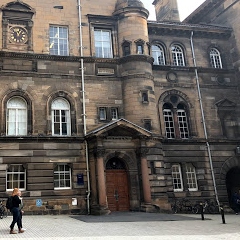Old Medical School, The University of Edinburgh, Teviot Place, Edinburgh EH8 9AG

Edinburgh’s medical school has attracted many international students throughout its history, including Dominican-born Clara Christian, the first black woman student enrolled at the University in 1915. When her mother passed away when she was 11, Christian moved to Edinburgh and attended a convent school. In 1915, she began her medical degree, but left University after falling pregnant with the child of fellow Caribbean medical student, Edgar Gordon. The couple emigrated back to the Caribbean in 1921. Living in the British Empire, they faced institutional barriers within Bermuda’s employment sector, frequently being overlooked for roles that were handed to white colonials. Their marriage deteriorated, resulting in divorce. Despite not graduating, Christian was capable, intelligent, and hard-working. Nevertheless, as a single mother, she had to turn down roles that required her to relocate permanently while promising little opportunity for promotion. Esme Allman captures the importance of remembering Christian, whose experience, “embodies the simultaneous invisibility and hyper-visibility of being the first black woman enrolled at Edinburgh, at odds with the possibility of falling by the wayside whilst navigating a predominantly white institution during the colonial period.”


